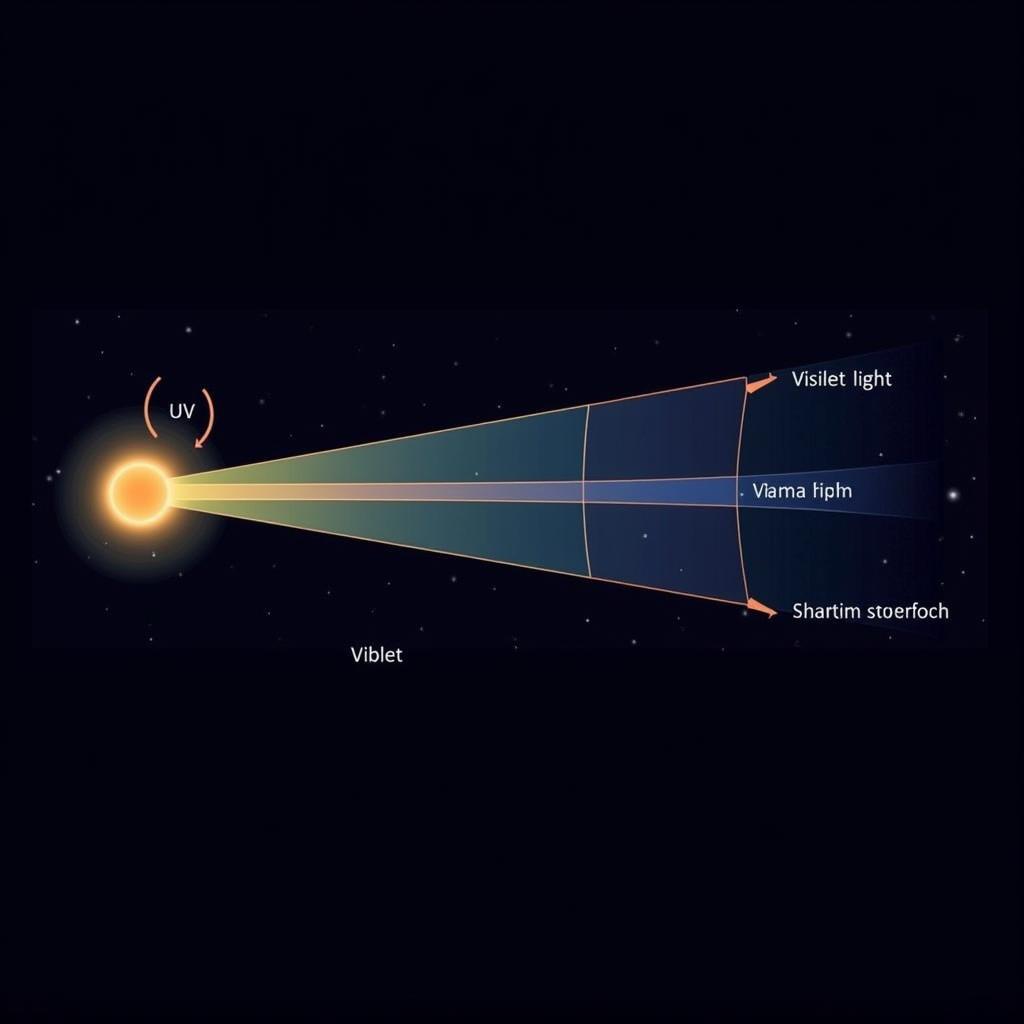Violet has the shortest wavelength of visible light, sitting at the high-energy end of the visible spectrum. This means its waves are packed tightly together, oscillating more frequently than any other color we can see. Understanding this property helps us grasp the nature of light, color, and how we perceive the world around us.
Unpacking the Science Behind Short Wavelengths
What exactly do we mean by wavelength? Imagine the ripples created when you drop a pebble into a pond. The distance between two consecutive crests of these ripples represents the wavelength. Light, although invisible to the naked eye except for the visible spectrum, travels in waves just like those ripples. Different colors of light have different wavelengths, which determine their properties.
Visible light is just a tiny sliver of the electromagnetic spectrum, which also includes radio waves, microwaves, infrared radiation, ultraviolet radiation, X-rays, and gamma rays. Within the visible spectrum, the wavelengths range from approximately 400 nanometers (violet) to 700 nanometers (red). what color in the rainbow has the shortest wavelength is a question that frequently arises when discussing this topic.
 Violet Light Wavelength Diagram
Violet Light Wavelength Diagram
How We Perceive Color and Wavelength
Our eyes contain specialized cells called cones that are sensitive to different wavelengths of light. When light enters our eyes, these cones send signals to our brain, which interprets these signals as color. Because violet light has the shortest wavelength, it stimulates our cones differently than longer wavelengths, resulting in our perception of the color violet.
Think about how a prism separates white light into its constituent colors. This happens because different wavelengths of light are refracted, or bent, at different angles as they pass through the prism. Violet light, with its short wavelength, is refracted the most, while red light, with its longer wavelength, is refracted the least. This dispersion of light reveals the full spectrum of colors hidden within white light.
The Impact of Short Wavelengths
The short wavelength of violet light means it carries more energy than colors with longer wavelengths. This explains why ultraviolet (UV) radiation, which has even shorter wavelengths than violet light, can be harmful to our skin. While we can’t see UV light, its high energy can damage our cells.
 Electromagnetic Spectrum Visible Light
Electromagnetic Spectrum Visible Light
“The energy of light is inversely proportional to its wavelength,” explains Dr. Anya Sharma, a physicist specializing in optics. “This means that shorter wavelengths, like violet, pack a bigger punch in terms of energy.” This principle is fundamental to understanding many phenomena, from the colors we see to the technologies we rely on.
Beyond the Visible: Exploring the Electromagnetic Spectrum
While violet holds the title for the shortest wavelength in the visible spectrum, it’s important to remember that there are even shorter wavelengths beyond what our eyes can detect. UV light, X-rays, and gamma rays all have progressively shorter wavelengths and higher energies. These forms of electromagnetic radiation have important applications in medicine, industry, and scientific research. Understanding which color of the visible light has the shortest wavelength opens the door to exploring the broader electromagnetic spectrum.
Which Color of Visible Light has the Shortest Wavelength? A Quick Answer
Violet is the color of visible light with the shortest wavelength.
What Determines the Color of Light?
The wavelength of light determines its color.
Why is Violet Light Bent the Most in a Prism?
Its shorter wavelength causes it to be refracted more than longer wavelengths.
Conclusion
Violet’s position at the short wavelength end of the visible spectrum gives it its unique properties. Its higher energy and greater refraction contribute to its vibrant hue and its role in phenomena like rainbows and prism dispersion. Understanding the relationship between wavelength and color provides a foundational understanding of how we perceive light and the world around us. For those curious about the opposite end of the spectrum, you can learn more about what color of light has the longest wavelength.
FAQ
- What is the approximate wavelength of violet light? Around 400 nanometers.
- What color has the longest wavelength? Red.
- Why can’t we see UV light? Its wavelength is too short for our eyes to detect.
- How does wavelength relate to energy? Shorter wavelengths have higher energy.
- What is the electromagnetic spectrum? The range of all types of electromagnetic radiation.
- Why is a rainbow colorful? Different wavelengths of light are refracted at different angles.
- How does a prism work? It separates white light into its component colors by refraction.
Need help with your color choices? Contact us! Phone: 0373298888, Email: [email protected] or visit us at 86 Cầu Giấy, Hanoi. We have a 24/7 customer service team.
